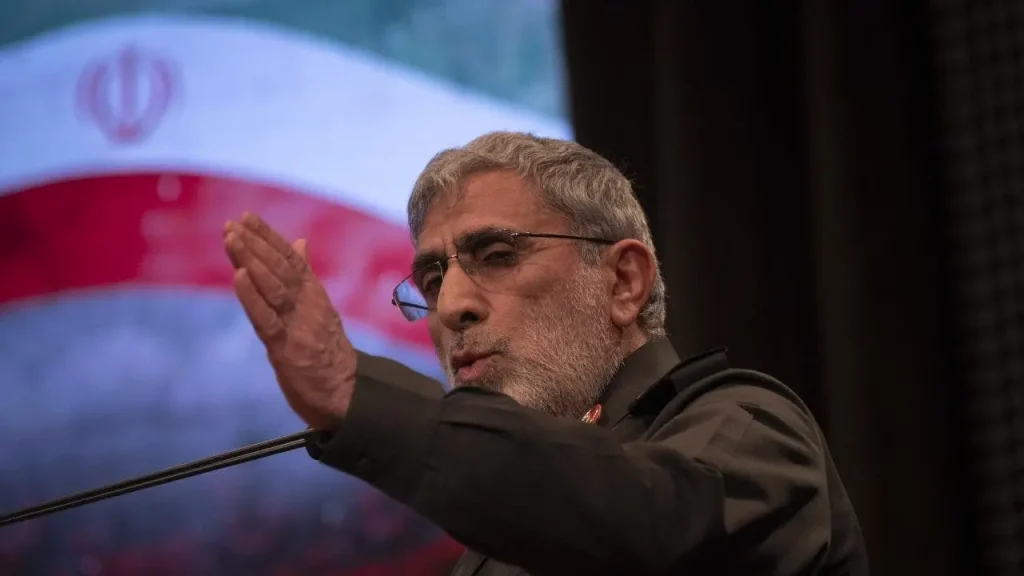The commander of Iran’s Revolutionary Guards Corps overseas military-intelligence service, Esmail Qaani, has been missing since last week’s strikes on Beirut, according to Iranian officials. Qaani had traveled to Lebanon after the killing of Hezbollah leader Hassan Nasrallah in an Israeli airstrike. Reports indicate that Qaani was in the southern suburbs of Beirut during a missile strike that targeted senior Hezbollah official Hashem Safieddine. However, he was not meeting with Safieddine at the time. Israeli officials have reportedly prevented Hezbollah from conducting a search for Safieddine after the bombing, and Hezbollah has stated that they will not announce his fate until the search is completed.
Safieddine was seen as a likely successor to Nasrallah, who died in the strike on Dahiyeh on Sept. 27. Qaani had traveled to Lebanon after Nasrallah’s death, but Iranian and Hezbollah authorities have been unable to contact him since the strike on Safieddine. Behnam Ben Taleblu, a senior fellow at the Foundation for Defense of Democracies, suggested that Qaani’s absence may indicate that he is injured or in hiding due to Israel’s increased targeting of Iran’s threat network in Lebanon. Israeli military spokesperson Lt. Col. Nadav Shoshani mentioned that the results of the strikes were still being assessed, and the attack was against Hezbollah’s intelligence headquarters in Beirut. Qaani’s Quds Force is responsible for overseeing Tehran’s dealings with allied militias like Hezbollah in the Middle East.
It is believed that Qaani’s disappearance is related to the increased hostilities between Israel and Iran, as well as Israel’s targeting of Hezbollah officials in Lebanon. The unsettlement caused by the recent airstrikes has led to speculation and rumors about the fate of high-ranking Iranian officials like Qaani. Iranian authorities have not been able to produce Qaani to dispel these rumors, leading to further uncertainty about his condition. The ongoing conflict in the region has created chaos and command-and-control issues, which contribute to the confusion surrounding Qaani’s whereabouts. Israeli authorities have yet to confirm whether Qaani was killed in the airstrikes, but the situation remains tense as the assessment of the strikes continues.
The escalating tensions between Israel and Iran, as well as their respective allies in Lebanon, have raised concerns about the potential for further violence and instability in the region. The loss of key figures like Nasrallah and potentially Qaani has significant implications for the balance of power and influence in the Middle East. The absence of critical leadership figures within Hezbollah and the Quds Force may also impact the decision-making and operational capabilities of these organizations. The situation in Lebanon remains precarious as Israel continues to target militant groups and Iran-backed militias, further exacerbating the regional conflict.
The recent events in Lebanon, including the strikes on Beirut and the disappearance of Qaani, underscore the complexities and challenges facing the Middle East. The involvement of multiple actors with divergent interests and allegiances has created a volatile and unpredictable environment. The fate of key figures like Qaani and Safieddine will likely have far-reaching implications for the ongoing conflict in the region. The uncertainty surrounding Qaani’s whereabouts highlights the high stakes and potential consequences of the current situation. As tensions continue to simmer and violence escalates, the risk of further instability and conflict in the region remains a pressing concern for all parties involved.


